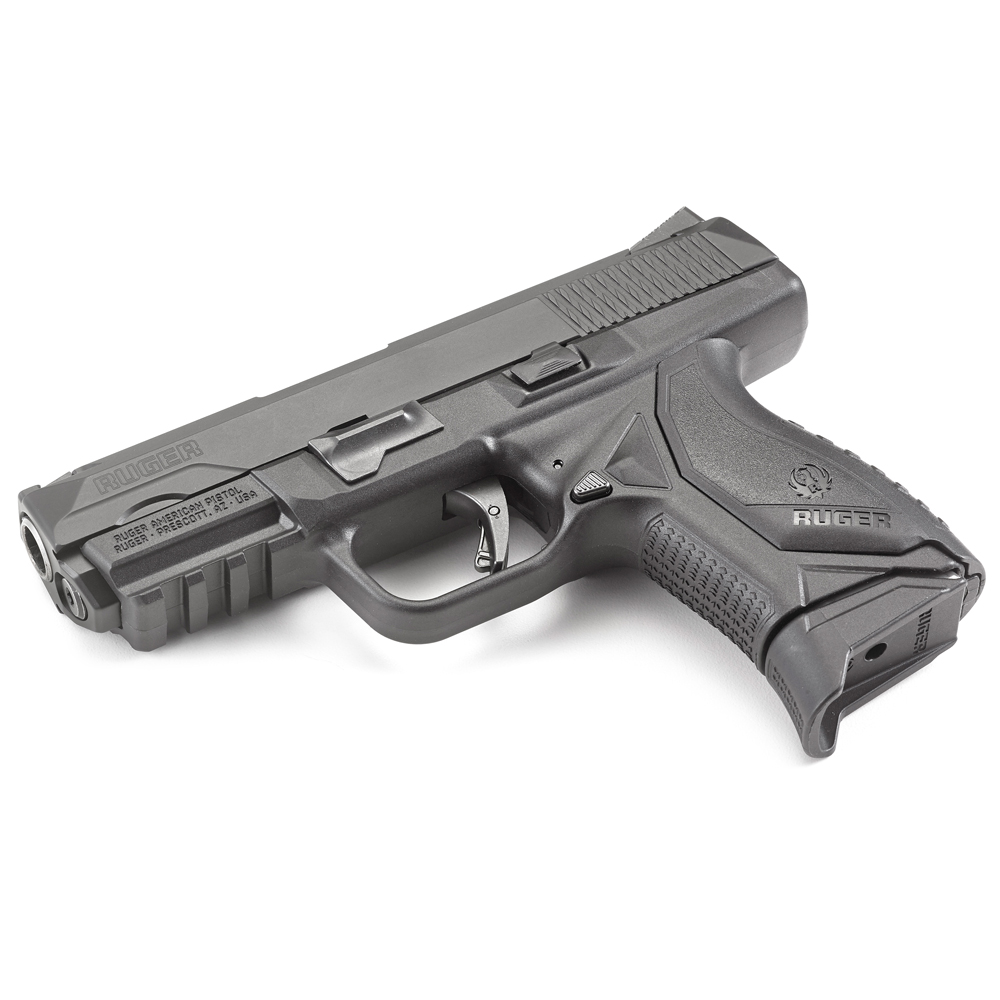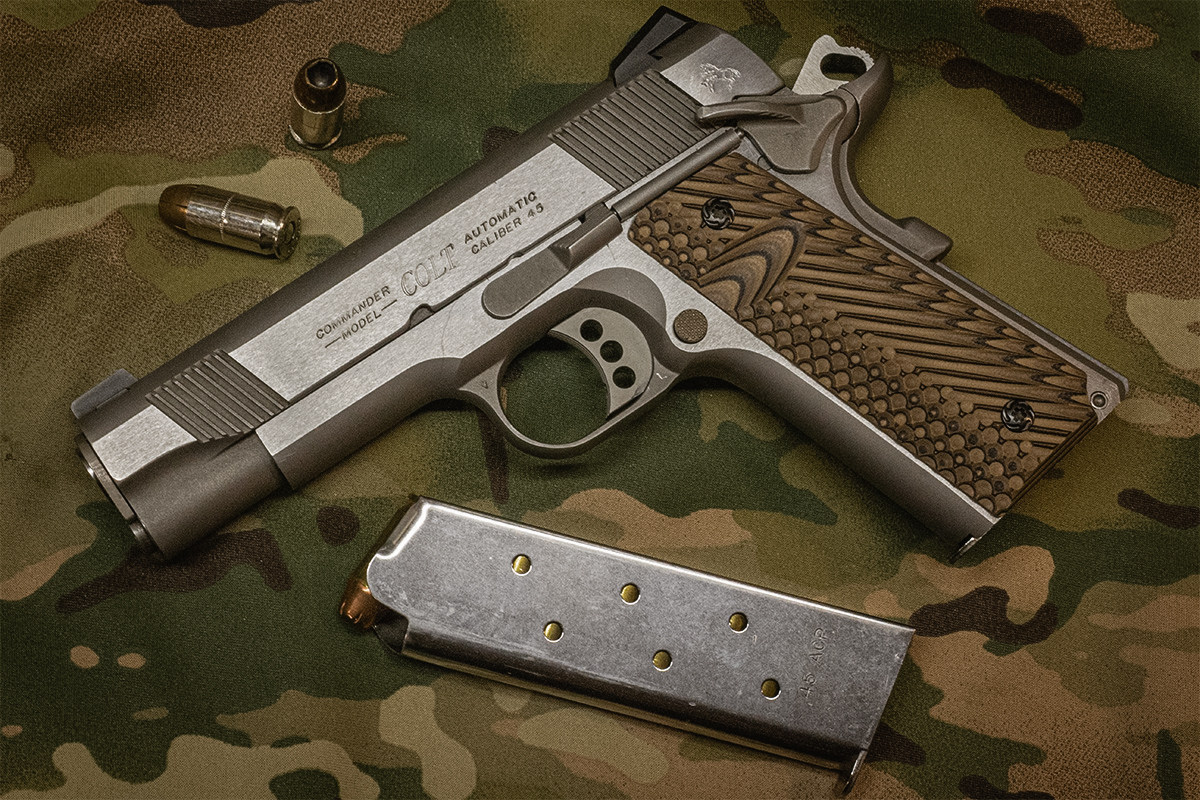.45 Acp Pistols - The M1911 (Colt 1911 or Colt Governmt) is a single-action, double-action, automatic pistol chambered in the .45 ACP cartridge.
The official designation of the US rifle from 1940 was the Automatic Pistol, Caliber .45, M1911A1, from the original Caliber .45, M1911, adopted in March 1911, and the improved M1911A1, which replaced the service in the 19th design. Pistol, Caliber .45, Automatic, M1911A1 in the Vietnam War.
.45 Acp Pistols

The M1911 designed by John Browning is most famous for his designs using a short throw system in its basic design. The gun was widely copied and this program became a prominent feature of the 20th century and is found on almost all modern firearms. It is popular with civilian shooters in competitive fields such as the International Defense Pistol Association and the International Practical Shooting Confederation.
Colt 45 Pistol Hi Res Stock Photography And Images
The US Army purchased approximately 2.7 million M1911 and M1911A1 rifles during its service life. The rifle served as the standard sidearm of the United States Army from 1911 to 1985. It was used extensively in World War I, World War II, the Korean War, and the Vietnam War. The M1911A1 9mm replaced the Beretta M9 pistol as the standard US pistol. In 1985. However, the US Army did not replace the M1911A1 with the Beretta M9 until October 1986, and due to the popularity of the M1911 among users, it was not fully phased out. Upgraded versions of the M1911 are still used by some US units. Army Special Forces, the US Navy and the US. Navy.
The M1911 rifle emerged in the late 1890s in search of a self-loading (or semi-automatic) rifle to replace various service revolvers.
The United States used cheap new weapons; During that decade, many new rifles and two new rifles (M1892/96/98 Krag and M1895 Marine Lee) were adopted, as well as Colt and Smith & Wesson revolvers for the Army and Navy. The next decade would have similar momentum, with the adoption of several other weapons and the search for a self-loading rifle culminating a decade later with the official adoption of the M1911.
Hiram S. Maxim built a self-loading rifle in the 1880s, but he specialized in machine guns. However, the application of the principle of using cartridge mortar for reloading led to the reloading of several rifles in 1896. The projects are attractive to different strengths, and each has started programs to find the ones that suit their strengths. In the United States, such a system would lead to formal research in the early 20th century.
Ruger American Compact .45 Acp Pistol
In 1899 and early 1900, self-loading rifles were tested, including attempts by the Mauser (C96 "Broomhandle"), the Mannlicher (Mannlicher M1894), and the Colt (-Colt M1900).
This led to the purchase of 1,000 Luger rifles chambered in 7.65mm Luger, a bottle neck cartridge. During field testing, it ran into some problems, especially with stopping power. Other governments have also appealed. As a result, DWM produced a larger version of the round, the 9×19mm Parabellum (known as 9×19mm NATO), a neck-chambered version of the 7.65mm round. Fifty of these were tested by the US military. In 1903.
During the Philippine-American War, American units fighting Tausug rebels in the Moro Rebellion in Sulu used the .38 Long Colt high-end Colt M1892 revolver, finding the rigors of jungle warfare to be poor, especially in terms of stopping power. Moros was a fighter and often used drugs to prevent pain relief.

The US Army soon reverted to the .45 Colt caliber M1873 single-action revolver, which was standard in the late 19th century; The heaviest shot was found to be more effective than charging the tribes.
Hs 45acp 4\
These issues led the command's chief of staff, General William Crozier, to authorize further testing of the new weapon.
After testing the Thompson-LaGarde rifle in 1904, Colonel John T. Thompson said the new gun "must not have a caliber" and that it should preferably be automatic.
This resulted in the testing of 1,906 rifles from six gun manufacturers (namely Colt, Bergmann, Deutsche Waff und Munitionsfabrik (DWM), Savage Arms Company, Knoble, Webley, and White-Merrill).
Of the six designs passed, three were completed early, with only the Savage, Colt, and DM designs being chambered for the new .45 ACP (Automatic Colt Pistol) cartridge.
Savage Launches New 1911 Pistol Family In .45 Acp And 9mm
All three had issues to fix, but only Colt and Savage resubmitted their designs. There is some debate as to the reasons for the withdrawal from the DWM - some say it was in favor and that the DWM design was mainly used as a "whipping boy" for the Savage and Colt revolvers.
It doesn't sit well with buying the design because of the pre-1900 Colt and Steyr efforts. However, several trials were conducted between 1907 and 1911 to decide between the Savage and Colt designs.
Among Colt's most successful lines was an experiment by designer John Browning in 1910. 6000 rounds were fired from one gun in 2 days. Uh, the gun got hot, so it was dipped in water to cool it down. The Colt rifle went without a hitch, 37 in Savage designs.

After successful trials, the Colt rifle was officially adopted by the Army on March 29, 1911, when it was designated the Model 1911, later renamed the Model 1911 and the M1911 in 1917. Mid 1920s. Cilian Marksmanship began manufacturing the M1911 rifle in August 1912 for members of the National Rifle Association. About 100 revolvers were issued by the "N.R.A." Manufactured at Springfield Armory and Colt by serial no.
Pocket .45 Power Perfected
The M1911 was officially adopted by the US. Navy and Marines in 1913. The .45 ACP "US Army Model 1911" was used by US Army Cavalry and Infantry during the 1916 US Punitive Expedition against Pancho Villa in Mexico.
By early 1917, 68,533 M1911 rifles had been delivered to the US armed forces. Colt's Pat Arms Company and Springfield Arms USA. However, the need to greatly expand the U.S. military and the increased armaments of World War I led to Remington-UMC and North American Arms Co. saw an increase in the production of other contractors such as Colt and Springfield. Quebec.
Several other manufacturers were awarded contracts to produce the M1911, including the National Cash Register Company, Savage Arms Company, Caron Brothers Manufacturing of Montreal, Burroughs Adding Machine Co., Winchester Repeating Arms Company, and the Lanston Monotype Company. the signing of the arms led to the cancellation of the contracts.
Combat experience in World War I led to some exterior changes that were completed in 1924. The new version received the modified M1911A1 in 1926, requiring more than 700,000 serial numbers with lower serial numbers than the M1911A1s. M1911.
Best 9mm & .45 Acp Revolvers
Changes from the original design to the M1911A1 include a shorter trigger, a cut-out in the frame behind the trigger, a belted main housing, a clip-on grip (to prevent the hammer from biting), a wider eye, a shorter hammer, and an easier. checking for maintenance (eliminating "Double Diamond" resources).
These changes were subtle and made the gun easier to shoot, especially for people with smaller hands. There were no significant internal changes and parts were interchangeable between the M1911 and M1911A1.
In the US, the Order Office developed a .22 training version of the David Marshall Williams M1911, which uses a floating chamber.

Like the Colt Service Ace, it was available as a conversion kit for both pistols and .45 M1911 revolvers.
Taurus 1911 Full .45 Acp Pistol, Stainless
Before World War II, the Norwegian arms factory Kongsberg Vaapfabrikk produced 500 M1911s as a submachine gun model in 1912. Between 1914 and 1940, 22,000 were produced, but after the German occupation of Norway in 1940, production continued and 10,000 pistols were produced as 657(n) for the German army.
Between 1927 and 1966, 102,000 M1911 rifles were produced in Argentina as Sistema Colt Modelo 1927, first by the Dirección Geral de Fabricaciones Militares. A similar gun was designed and manufactured by Ballester-Molina.
The M1911 and M1911A1 revolvers were ordered from Colt or produced domestically in modified form by several other countries, including Brazil (M1937 Treaty Rifle), Mexico (Mexico M1911 Treaty).
Sig p365 tulster holster, sig p365 iwb holster, sig holsters p365, sig p365 sas holster, sig p365 xl holster, sig p365 hybrid holster, appendix holster sig p365, safariland holster sig p365, sig p365 belt holster, sig p365 holster, sig p365 purse holster, sig sauer p365 holster
0 Comments